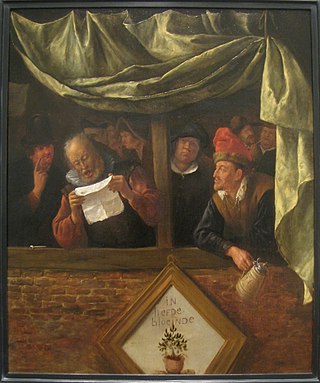Rhetoric
art of persuasion, one of the three ancient arts of discourse From Wikipedia, the free encyclopedia
Remove ads
Rhetoric is the art of convincing and persuading people by language through public speaking or writing.[1][2]

Overview
Origin
The word is derived from the Greek term ῥητορικὴ [τέχνη], roughly meaning "the art of speech." Merriam-Webster's dictionary defines it as "the art or science of using words effectively in speaking or writing, especially the art or science of literary composition."[source?]
The word effectively in this definition is a relative matter. What is effective in a certain context can be entirely different in another. Different languages differ in their rhetorical styles – that is, in the way that they use language to fulfill various purposes.[clarification needed]
One can be trained for it. It is the art or the technique of persuasion, used by orators (public speakers), writers and media.[source?]
Remove ads
History
Origin
Its origin was in ancient Greece of the 5th century. They made their decisions by speaking for or against proposals in a public space. Also, speeches were made when a person was accused of a serious crime before the magistrates.[3] Because rhetoric was so important to them, the Greeks and Romans wrote about how to be a good rhetorician. This is sometimes called secondary rhetoric.[3]
Examples
It is a technique which can be taught, and used in writing. An early example is Plato, who wrote his works in the form of dialogues. Each question raised is discussed between two characters. In the ancient world, the Romans, who were much influenced by the ancient Greeks, also used the same methods for decision-making. Cicero was one of their famous orators. In their case, the debates did not involve all citizens but merely the Roman Senate or the courts.
Middle Ages
In medieval universities, rhetoric was taught as part of the curriculum. Rhetoric, dialectic and grammar form the trivium which, with the quadrivium, make up the seven liberal arts of Western culture. During Antiquity and the Middle Ages, rhetoric was used for persuasion in public and political arenas,[clarification needed] and also in the courts of justice. The words rhetoric or sophism are often used with a negative meaning, of disinformation or propaganda.
As the art of persuasion, the rhetoric continues to be important in present-day public life.[4] They are also used to describe a speech with doubtful or slanted arguments.[clarification needed] Several hundred rhetorical figures were recognised by classical rhetoricians. Some of these are still in use, such as metaphor, simile and paradox.[5]
Today
In the modern world, speeches made on television, ideas embedded in advertisements or in front of crowds are all rhetorics. They speak to people directly with the intention of persuading them. Before World War II, radio and print media were powerful tools for rhetoric. The newspapers and books persuade readers towards a particular point of view. Rhetoric does not depend only on a live audience.
Remove ads
Structure
Aristotle, a rhetoric has three elements in persuasion:
Contrastive rhetoric
Australia
A 1988 study was conducted by Söter in Australia among students who were native speakers of Arabic, Vietnamese and English. The sample, sixth and eleventh grade students were asked to write a bedtime story for a young child. Patterns were immediately evident in the different approaches used by the student's in the story writing task.
Vietnamese
The Vietnamese stories placed primary focus on characters and the relationships between them (manifested in a great proportion of dialog). English stories placed primary focus on the sequential forward movement of the plot. Arabic stories placed primary focus on descriptive elements of the setting.
Contrastive rhetoric says that people who share a common language might have different rhetoric styles due the influence of culture and exchanges. The discourse goes beyond the target language's native forms of discourse, organization or rhetoric.[6]
United States
A paraphrasing task study was done in the USA among Chinese and Russian students. American students were easily able to paraphrase, but Chinese students found it hard, perhaps due to their academic environment influenced by Confucianism. Russian students struggled with the paraphrasing because norm in Russian academic environment was that students are only required to read and describe, and was not required to give a personal interpretation or an opinion. U.S. rhetorical style: ethnocentric sources describe it as typically direct and relatively logical.[7]
Remove ads
Quotes
Some witty remarks were made against orators and their rhetoric.
Plato
The orator is one who intends to mislead another, without being misled himself.
Kant
Oratory is the art of playing for one's own purpose upon the weaknesses of men, and merits no respect whatever.
Related pages
References
Other websites
Wikiwand - on
Seamless Wikipedia browsing. On steroids.
Remove ads
